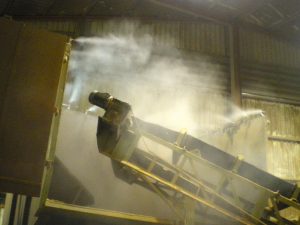Application
Dust Suppression with Misting / Fogging
High-pressure misting systems offer a practical solution for controlling dust in both indoor and outdoor spaces, regardless of size. They create ultra-fine water droplets that capture and suppress PM10 and smaller particles, forming a thick mist that prevents dust from escaping. This effectively removes 0.1-1000 micron breathable dust particles. Compared to dust control methods requiring upgrades, misting systems are a cost-effective option.
Benefits of humidified air
Customize misting systems to fit your needs and install them near machinery without stopping operations. These systems require low maintenance, operate automatically, and conserve water. Materials maintain minimal residual humidity after misting. Cleaning and maintaining the nozzles is simple, and the surfactants used are biodegradable. Use misting systems in yards, storage piles, painting units, quarries, mines, stone crushers, conveyor belts, truck ramps, hoppers, steel and cement factories, ship loading/unloading, ore and coal storages, and recycling plants. Place them near areas with high dust concentrations for optimal results.
![]()
Airborne particulates that are naturally exist in the environment or resulting from production processes
![]()
Millions of ultra thin water droplets are atomized in the environment.
![]()
Droplets capture dusts particles, driving them to the ground.

